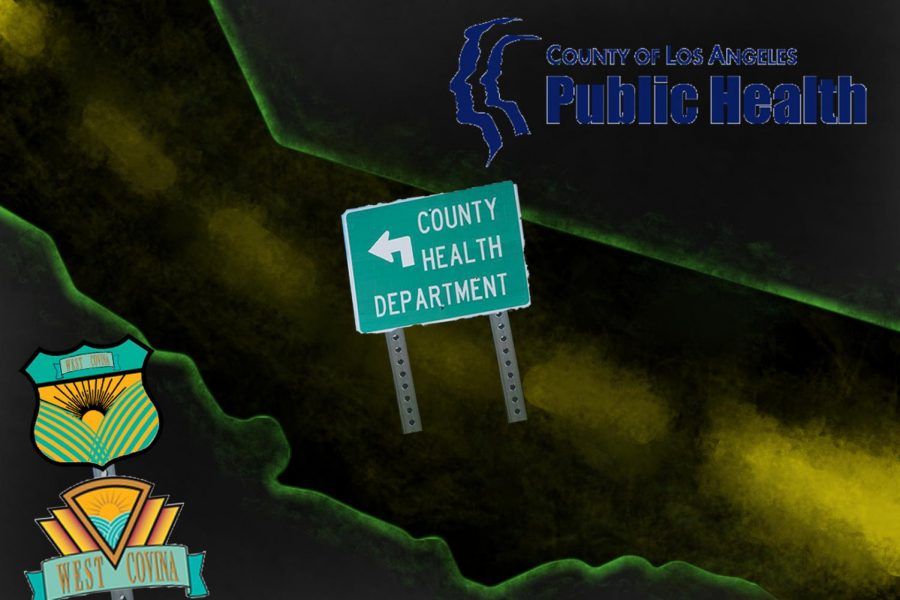City Faces Major Health Department Funding Hurdle
County unlikely to support one of the major sources of funds for the brand new health department
With no set in stone funding sources for their new health department, West Covina residents found out one part of a city funding proposal is not something the county is likely to agree too.
Residents came forward with further questions on April 1 at Supervisor Hilda Solis’ second town hall regarding West Covina’s decision to break from Los Angeles County’s Department of Public Health.
Financial questions were answered in greater detail than they were at her first town hall. Sections of the presentation also directly answered questions Los Angeles County Health Officer Muntu Davis was unable to field at the last meeting.
“I think that’s a CEO question, a county CEO question, the net county cost dollars that are allocated to the department are done by the CEO,” Davis said in response to one financial question. “I don’t know what proportion if any of it comes from the property tax, so I couldn’t answer that question.”
Some issues still persisted between both town halls for both city and county numbers.
For the county, the fees category went from $104 to $103 million between the town halls, bringing the budget down to $1.514 billion with it.
The city said the county had incorrect data that was pointed out in the last article regarding West Covina’s population size. This data is still up and remains unchanged (86,215 for 2019). This is because the 86,215 figure only includes individuals 18 and older where a full Census population (referenced in the city staff presentation) includes the entire population including children 17 and under. Further, a more comprehensive analysis and nuanced explanation of the actual population discrepancy is included in the issued correction.
For the city, however, their numbers concerns require a closer look into the data.
The numbers from both town halls can be visualized using SAC.Media’s in depth funding and expense tracking infographic.
Officials confirmed most of what was known at the first town hall with some additions and corrections. Specifically, one figure that has been floated around is a misattribution from calculating out one line on the Feb. 23 staff report.
The County Health Department is funded by assessments on property tax roll. West Covina properties are currently assessed 1% property tax on the value of the home/building, of the 1% collected approximately 33.2% is distributed to the County of Los Angeles for county services, including the health department. Of the property taxes collected in West Covina, approximately $31 million is attributable to LA County for county services.
Many have done the simple math of $31 million times 33.2% and arrived incorrectly at a $10.292 figure (or rounded to a $10.3 million figure). It has even been reported in the Tribune as $10.23 million based on a city staff presentation, and this figure can be calculated by rounding the staff report’s percentage to 33%.
At this town hall, however, that has been confirmed to be an incorrect estimate.
Logically, this makes sense, because that figure would have meant that all of that 33.2% for the county went to the health department, meaning that sanitation (which is lumped in with health), public assistance, public protection, recreational and cultural, general and other county costs would have went unfunded by the city’s portion.
That 33.2% is also an inaccurate figure. The county’s overall budget uses 32% from all funding sources for the health department.
If the numbers were to be broken down by county revenues for the health department (the area where West Covina is “paying into” for public health), this becomes $210 million, or 2.17% of the funding, for the health department’s $1.5 billion budget.
This $210 million price tag is shared by 340 cities, unincorporated communities and neighborhoods, meaning the city’s contribution to the 2.17% becomes heavily diluted from the amount of sources that “pool” the funds.
Officials then went on to point out that it is all apportionment after it hits the county’s general fund. This makes calculations insignificant as the county’s general fund is made up of more than the 1% property tax, and the tax becomes joined with other revenues before it gets allotted by priorities.
It becomes virtually untraceable dollar for dollar, as there is no system to offer more services to areas that pay more. In essence, if this understanding is correct – leaving from public health would make West Covina residents a “donor” to county public health as their county fees would not change, nor would the county’s apportionment structure.
Further these numbers were clarified as a pool of revenues that the county would be unwilling to separate out or earmark for the city, according to Los Angeles County’s Auditor-Controller Arlene Barrera.
This finding flies in the face of one city proposed solution of tapping funds from the taxes provided to the county. A presentation made before council on March 16 described this option as the city seeking a “graceful transition, peaceful release and a Tax Transfer Agreement.”
The county will do no such thing.
“Currently, board policy doesn’t provide for such a transfer, only transfers for annexations,” Barrera said. “So I don’t believe the county would be supportive of transferring a share of its general fund property taxes for this purpose.”
Correction: April 4, 1:00 p.m.:
It has been pointed out in an earlier version of this article that the following sentence needs to be updated for clarification:
Incorrect county data that was pointed out in the last article regarding West Covina’s population size is still up and remains unchanged (86,215 for 2019, versus US Census’ 105,101 or Suburban Stats’ 106,098 for 2019).
This has been amended to an “unverifiable” claim that the city is claiming that the county is incorrect. The changes to this part point out the difference in populations of individuals under 18 from roughly 19,800 from the county, 22,071 from the Census and 26,054 from Suburban Stats.
For reference, these estimates are derived from their respective websites, and the county’s figure is from pulling the highest population of 106,098 (the same population for Suburban Stats), where the Census has an estimated population of 105,101.
Subtracting these numbers you get a difference of population for 18 and older of 86,215 for the county in 2019, 83,030 for the Census and 80,044 for Suburban Stats. This difference in population is significant, but due to being unable to determine the methodologies for each population estimate, this information is kept to this correction and removed from the story to avoid confusion.
Due to the vast discrepancy and previous allegations by city staff and officials that the numbers are inaccurate, this section has been updated to more accurately describe the discrepancy:
The city said the county had incorrect data that was pointed out in the last article regarding West Covina’s population size. This data is still up and remains unchanged (86,215 for 2019).
This is because the 86,215 figure only includes individuals 18 and older where a full Census population (referenced in the city staff presentation) includes the entire population including children 17 and under. Further, a more comprehensive analysis and nuanced explanation of the actual population discrepancy is included in the issued correction.



